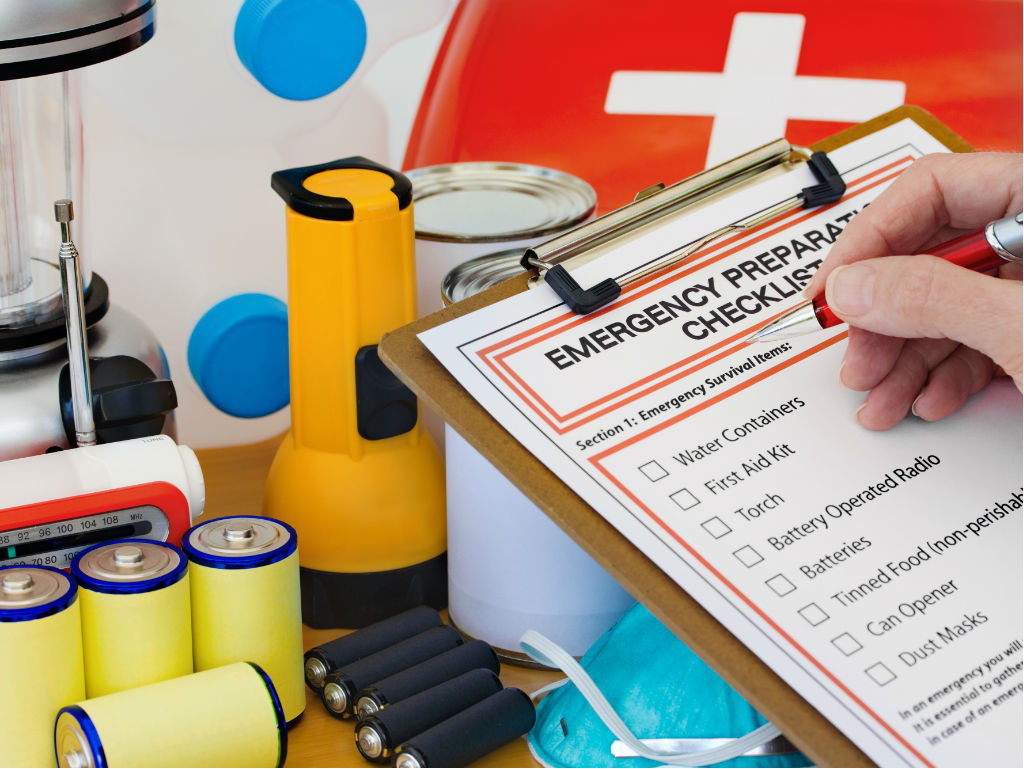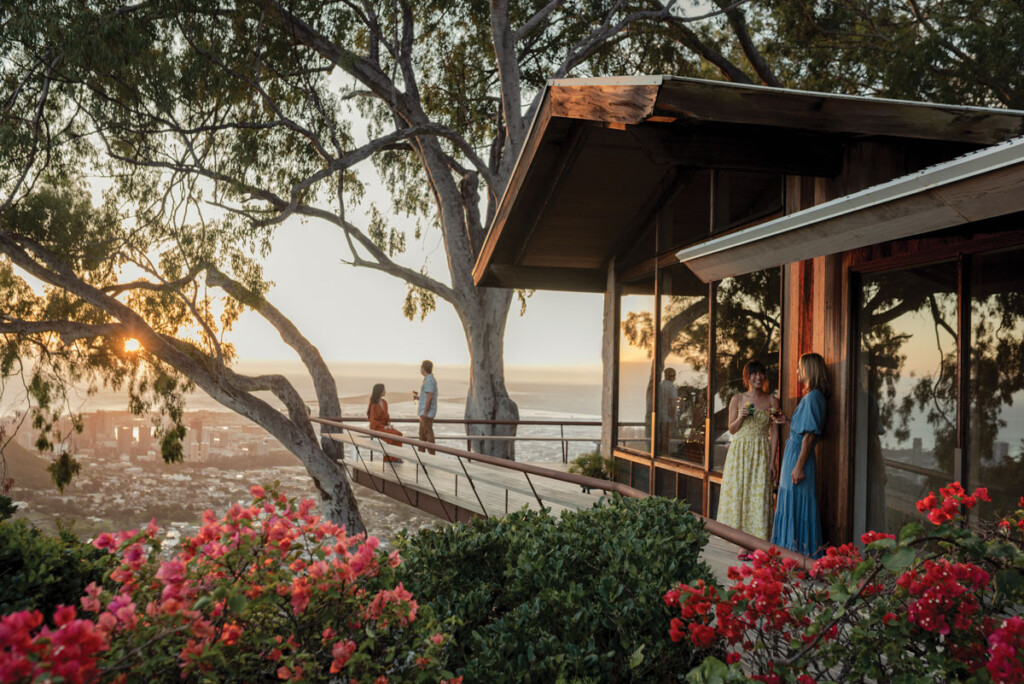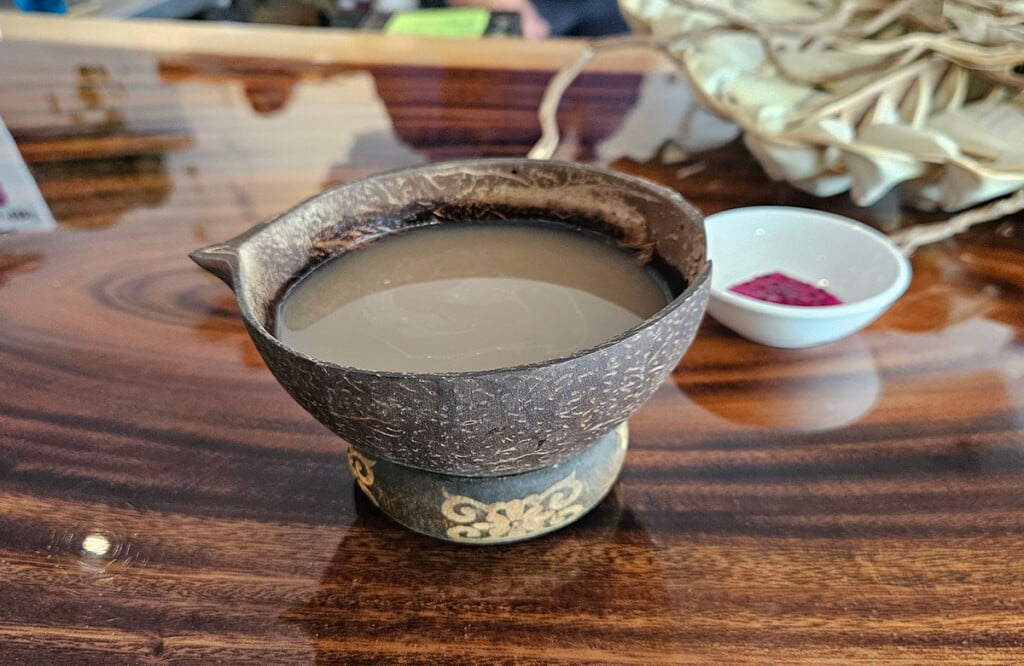Shelter in Place: 9 Expert Tips for Preparing for a Missile Attack in Hawai‘i
Expert advice for Oʻahu on where to shelter in your house, when to pick your kids up from school and what to buy now.

Photo: Thinkstock
Hawai‘i’s recent ballistic missile warning was a false alarm, but it sure got us thinking. In the case of a real nuclear attack, we’ve heard that we should shelter in place, ideally in the basement of a concrete building stockpiled with food and water. Basements are not commonplace in the islands. So, where do we hide in a single-walled wood house? What if we’re on the road? What would our children’s schools do and when would we be able to pick them up?
We asked a local expert, 911 Seminars’ A.J. Lactaoen, for his advice on what to do in real-world scenarios. Lactaoen advises schools and families on how to prepare for natural and nuclear disasters through his company and for the American Safety and Health Institute. He is also co-author of 911 The Red Book for Emergencies. Here are nine tips he has for families:
1. Don’t panic. Even if North Korea succeeded in exploding a nuclear bomb in a heavily populated part of O‘ahu, the Hawai‘i Emergency Management Agency estimates almost 90 percent of the population would survive the initial blast. While radiation would be strong for about five miles around the point of impact, the farther you are from ground zero, the less exposed you would be. For example, Lactaoen says that if Pearl Harbor were hit, Downtown Honolulu would be well outside the highest radiation band and people on the North, West and East Shores would not see much of an impact at all. Experts believe North Korea may have the capability to send a 10 to 150-kiloton bomb, but the difference is not as great as most people believe. Even if Pearl Harbor were hit with a 150-kiloton bomb, Pearl City and ʻAiea would be outside ground zero. People in high radiation zones can also protect themselves by going indoors and waiting until the radiation dissipates. Lactaoen says 99 percent of radiation would dissipate within two days. So, almost everyone would be able to leave their shelter-in-place room within that time or even sooner.
2. Make a specific plan. Have a family meeting and decide the safest spot to shelter-in-place in your home. (See #3 for how to choose the best place or places.) Decide where you’d go if you were at work. Ask your child’s school what their procedure is. (See #5 for how some schools are preparing.) If you take the same route to work each day, take note of possible safe buildings along the way.
3. Use common sense when choosing a shelter or shelters. There are two parts to surviving a nuclear attack. First, you need to shelter from the initial blast. Think of where you would go in an earthquake. Look for the safest structure in a home or building and crouch down low, or under a sturdy table, in the center of the room, away from any windows and possible flying debris. In a house, a ground-floor bathroom or closet may be your best bet. In a bigger building, it may be an internal stairwell or underground parking lot. Make sure you do not look at an impact as the flash can burn your eyes. Second, you will want to avoid coming in contact with radioactive dust that could enter through broken windows or vents. In some cases, you may need to plan out two shelters. For example, if you live in a two-story house, your initial safe spot could be in a tiny closet under the stairwell. But, after the initial impact, your family could cover up and hurry upstairs into a bigger, windowless closet where you have more supplies stocked up.
4. Stock and consistently check these items:
- An emergency survival kit. You should have two weeks’ worth of supplies to last you through a hurricane or tsunami anyway, such as food, water, medications, a battery-powered or crank-powered radio and flashlight and extra batteries. FEMA has a full checklist you can print out now.
- Protective clothing. The idea is to cover your whole body so that you do not come in contact with radioactive dust if you need to move between shelters. You will want to have a filter mask (like painters use), glasses or sunglasses, a sweatshirt with a hood to cover your head, long sleeves, pants, gloves (disposable latex or rubber gloves are fine), shoes and socks.
- Vinyl sheets and duct tape. Buy plastic sheets, like painters use as drop cloths, from a hardware store. Cut them to the right size to cover windows in your planned shelter area. Have them ready to tape up if needed.
5. Ask about your school’s emergency plans. Public schools regularly practice Shelter-In-Place drills. In the event of a missile attack, parents are asked to take shelter and not pick their children up at school. The Hawaiʻi State Department of Education would update parents on the next steps to take through its website hawaiipublicschools.org, as well as its Twitter account @HIDOE808,and Facebook.
Lactaoen says schools’ emergency plans vary greatly, but the most important thing is for administrators and parents to work together and know what the plan is. Every school should have a designated safe zone and at least two to three days of emergency supplies. This does not mean hot breakfasts, lunches, dinners and snacks, but enough to keep students and teachers alive. When safe, schools may plan to release children to parents outside. Other schools are planning to have additional food and supplies, including lotion for radiation burns, iodine pills for radiation poisoning (that parents would sign waiver forms for ahead of time) and decontamination areas for people to shower off and enter the school. If your child is in school, Lactaoen says you will probably be able to pick them up within two days.
6. Talk to your doctor before rushing to buy iodine pills. Families may or may not want to consider purchasing medicine in case of radiation poisoning. If a family feels this is what they’d like to do, they should talk to their doctor and pediatrician about possible benefits and risks first.
If you hear an alert:
7. Turn on the radio, television and go online. If you receive an emergency message or hear sirens, look for information on what to do immediately. During the false alarm, the cell phone alert and crawl on television screens were all people saw. If the state triggers an alert, emergency workers will likely be actively sharing key information and directions through as many media outlets as possible. This can prevent panic if it’s a false alarm and can offer invaluable information in case of a real attack.
8. Do not get in your car and attempt to drive anywhere. Even if you are at Pearl Harbor or somewhere you fear will be targeted, you should stay put. The missile could miss its intended target and you will not have time to drive somewhere and get inside. But, if you’re already on the road, look for the safest structure you see. If you are on the freeway, get off and find a place to shelter. Do not attempt to drive home, to your child’s school or risk being stuck outside in an effort to reach the perfect, concrete building with a basement. Drive and park normally. Do not abandon your car in the middle of the road.
9. Don’t be afraid to let people (or pets inside). If people or pets are outside during the blast, they could have invisible, odorless radioactive dust on them. While this sounds scary, you can protect yourself from contamination without leaving them outside. Have the person take off all of their clothes and leave the clothes outside. Wrap the person head-to-toe in towels or blankets, bring them inside and have them shower or sponge off with water. If you touch them, wear gloves. Then, put clean clothes on them. When it’s safe to go outside, you can put the contaminated clothes in a plastic bag and dispose of them.
Want to learn more? The Centers for Disease Control has a whole section on its website about radiation emergencies with information including how to prepare, how to protect yourself and fact sheets about the effect radiation can have on your health. emergency.cdc.gov/radiation.
If you have questions for A.J. Lactaoen or would like to hire him to give a seminar at your school or organization, he can be reached at 911@911seminars.com.








